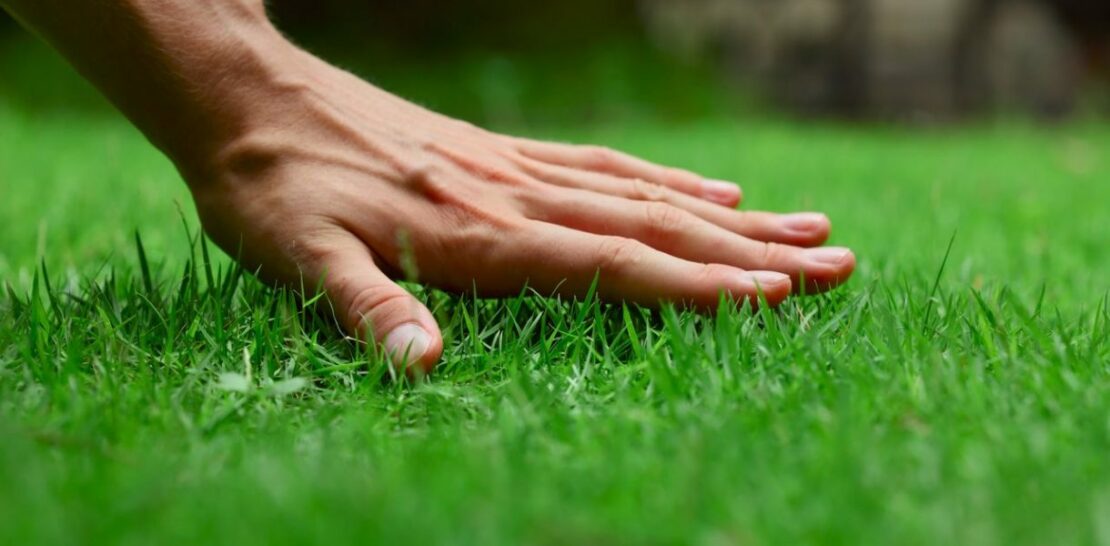When it comes to maintaining a healthy and beautiful lawn, there are numerous factors to consider and steps to follow.
Proper lawn care involves a balance of watering, fertilizing, mowing, and other essential techniques.
In this comprehensive guide, we will explore all aspects of lawn care, from soil preparation and grass selection to pest control and seasonal maintenance.
With the right knowledge and dedication, anyone can achieve a lush, green lawn that is the envy of the neighborhood.
1. The Foundations of a Healthy Lawn: Soil and Grass Selection
For any lawn to thrive, it must have a strong foundation. This begins with understanding the soil in your yard and choosing the right grass variety for your needs.
- Soil testing: Before planting or renovating your lawn, it’s critical to test the soil to determine its pH, texture, and nutrient levels. Soil testing kits are readily available at garden centers or through your local extension service. This information will guide your decisions on soil amendments and fertilizers needed to create the ideal environment for your lawn.
- Soil amendments: Based on your soil test results, you may need to add amendments to improve the quality and structure of your soil. Common amendments include lime (to raise soil pH), sulfur (to lower soil pH), compost (to improve soil structure and fertility), and gypsum (to break up clay soils).
- Grass selection: Choosing the right grass variety for your climate, soil conditions, and desired level of maintenance is crucial for a successful lawn. Research the grass types that are well-suited to your region and select one that meets your specific requirements. Some factors to consider include drought tolerance, shade tolerance, growth rate, and resistance to pests and diseases.
2. Establishing Your Lawn: Planting and Initial Care
Once you have prepared the soil and chosen the right grass variety, it’s time to plant your lawn. The following steps will help ensure a successful establishment:
- Choose the right time: For most grass types, the optimal time to plant is during their peak growth season. For cool-season grasses, this is typically in the early spring or fall, while warm-season grasses are best planted in late spring or early summer.
- Prepare the site: Clear the area of debris, weeds, and rocks, then till the soil to a depth of 4-6 inches. Incorporate any necessary soil amendments, then level and smooth the area with a rake.
- Seeding or sodding: Depending on your preference and budget, you can establish your lawn using seed or sod. Seeding is generally more cost-effective but requires more initial care and patience, while sodding provides an instant lawn but can be more expensive.
- Watering: Newly planted lawns require frequent and consistent watering to ensure proper germination and establishment. Follow the recommendations for your specific grass type, but generally, you should water daily or every other day for the first few weeks.
3. Ongoing Lawn Maintenance: Mowing, Watering, and Fertilizing
Once your lawn is established, ongoing care is essential to keep it healthy and looking its best. The three main components of lawn maintenance are mowing, watering, and fertilizing.
- Mowing: Proper mowing practices are key to a healthy lawn. Always use a sharp mower blade and cut at the recommended height for your grass type (typically between 2-4 inches). Mow frequently enough so that you never remove more than one-third of the grass blade at a time, and leave grass clippings on the lawn to return valuable nutrients to the soil.
- Watering: Established lawns generally require about 1 inch of water per week, either from rainfall or supplemental irrigation. Deep, infrequent watering is best, as it encourages deep root growth and drought tolerance. Water your lawn in the early morning hours to minimize evaporation and prevent disease.
- Fertilizing: Regular fertilization is necessary to provide your lawn with the nutrients it needs to grow strong and healthy. Use a balanced fertilizer and follow the recommended application rates and schedule for your grass type. Additionally, consider incorporating organic matter (such as compost) to improve soil fertility and structure.
4. Seasonal Lawn Care: Adapting to Changing Conditions
As the seasons change, so do the needs of your lawn. Adapting your lawn care practices to suit the specific conditions of each season will help ensure its continued health and vitality.
- Spring: This is a crucial time for lawn care, as the grass is coming out of winter dormancy and beginning to grow again. In the spring, focus on removing any debris from the lawn, raking to remove thatch, and applying a pre-emergent weed control. Additionally, this is a good time to aerate your lawn, allowing water, air, and nutrients to penetrate the soil more effectively.
- Summer: As temperatures rise and rainfall becomes less frequent, it’s important to adapt your watering and mowing practices accordingly. Water deeply and less frequently, and raise your mower height to protect the grass from heat and drought stress. You may also need to apply a slow-release fertilizer during the summer months, depending on your grass type.
- Fall: Fall is an excellent time to perform lawn maintenance tasks such as overseeding, aerating, and applying a winterizing fertilizer. Rake up fallen leaves promptly to prevent them from smothering the grass and creating a breeding ground for diseases.
- Winter: While your lawn may be dormant during the winter months, it’s still important to protect it from damage. Avoid walking on frozen grass, as this can cause the grass blades to break. Keep your lawn clear of heavy snow and ice, as this can lead to snow mold and other problems.
5. Pest and Disease Control: Protecting Your Lawn from Threats
A healthy lawn is less susceptible to pests and diseases, but even the most well-maintained lawns can still face challenges. Knowing how to identify and address common lawn problems is vital to preserving the health and beauty of your landscape.
- Identifying problems: Regularly inspect your lawn for signs of pests, diseases, or other issues, such as irregular patches of discoloration, thinning grass, or visible insects. Early detection is key to successful treatment.
- Cultural controls: Many lawn problems can be mitigated or even eliminated through proper cultural practices, such as maintaining the appropriate mowing height, watering deeply and infrequently, and promoting good soil health. These practices help to create an environment that is less conducive to pests and diseases.
- Chemical controls: In some cases, chemical treatments may be necessary to combat persistent or severe lawn problems. Always choose the least toxic option that is specifically designed for your particular issue and follow the label instructions carefully.
- Integrated pest management (IPM): Implementing an IPM approach to lawn care involves combining cultural, biological, and chemical controls to effectively manage pests and diseases while minimizing harm to the environment and non-target organisms.
In conclusion, achieving and maintaining a healthy, lush lawn requires a comprehensive understanding of the various factors that contribute to its well-being. From soil preparation and grass selection to proper mowing, watering, fertilizing, and pest control, each aspect of lawn care plays a vital role in preserving the beauty and functionality of your outdoor space. With dedication and the right knowledge, you can create a lawn that is not only visually appealing but also environmentally responsible and resilient to the challenges of each season.




